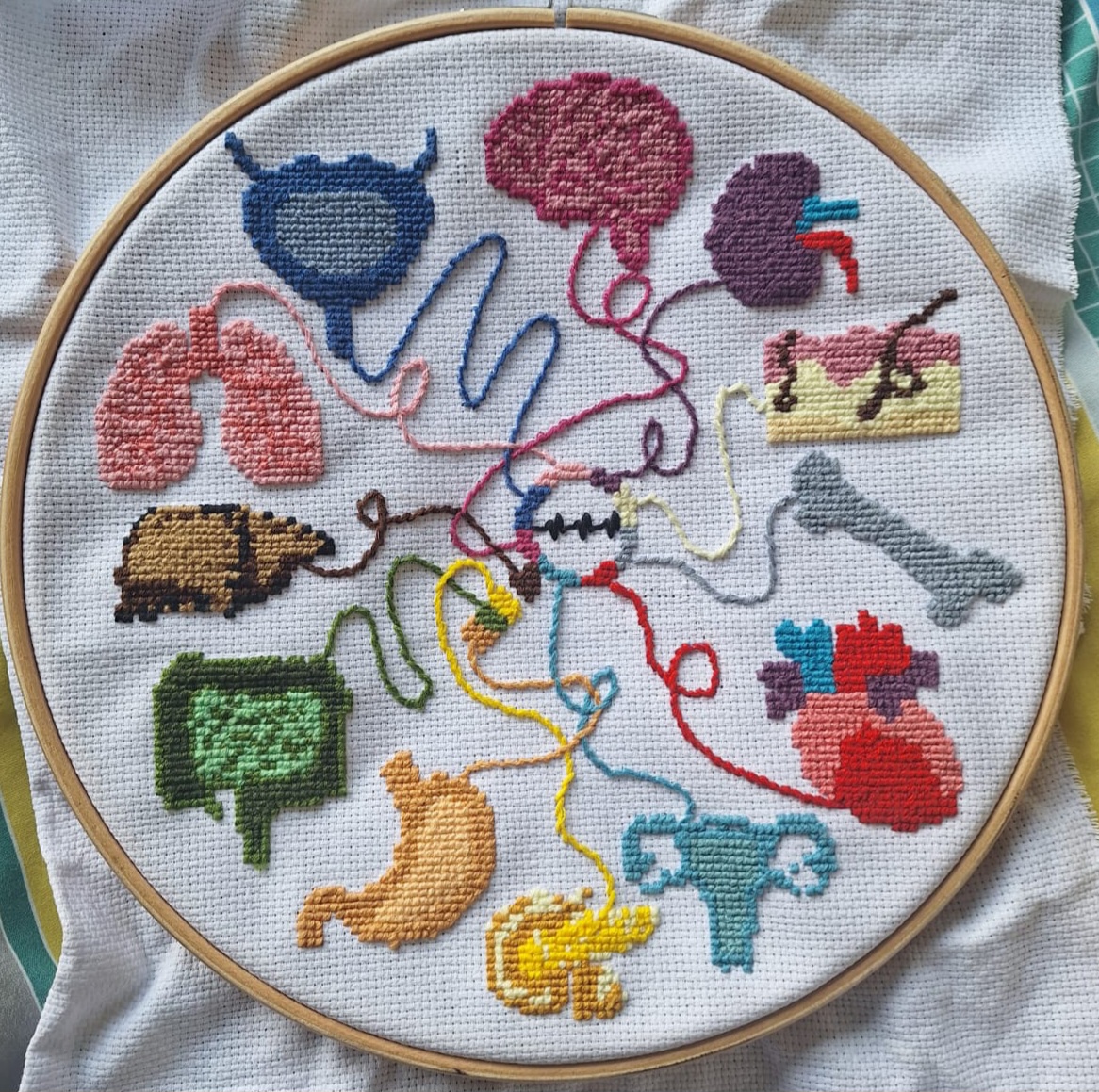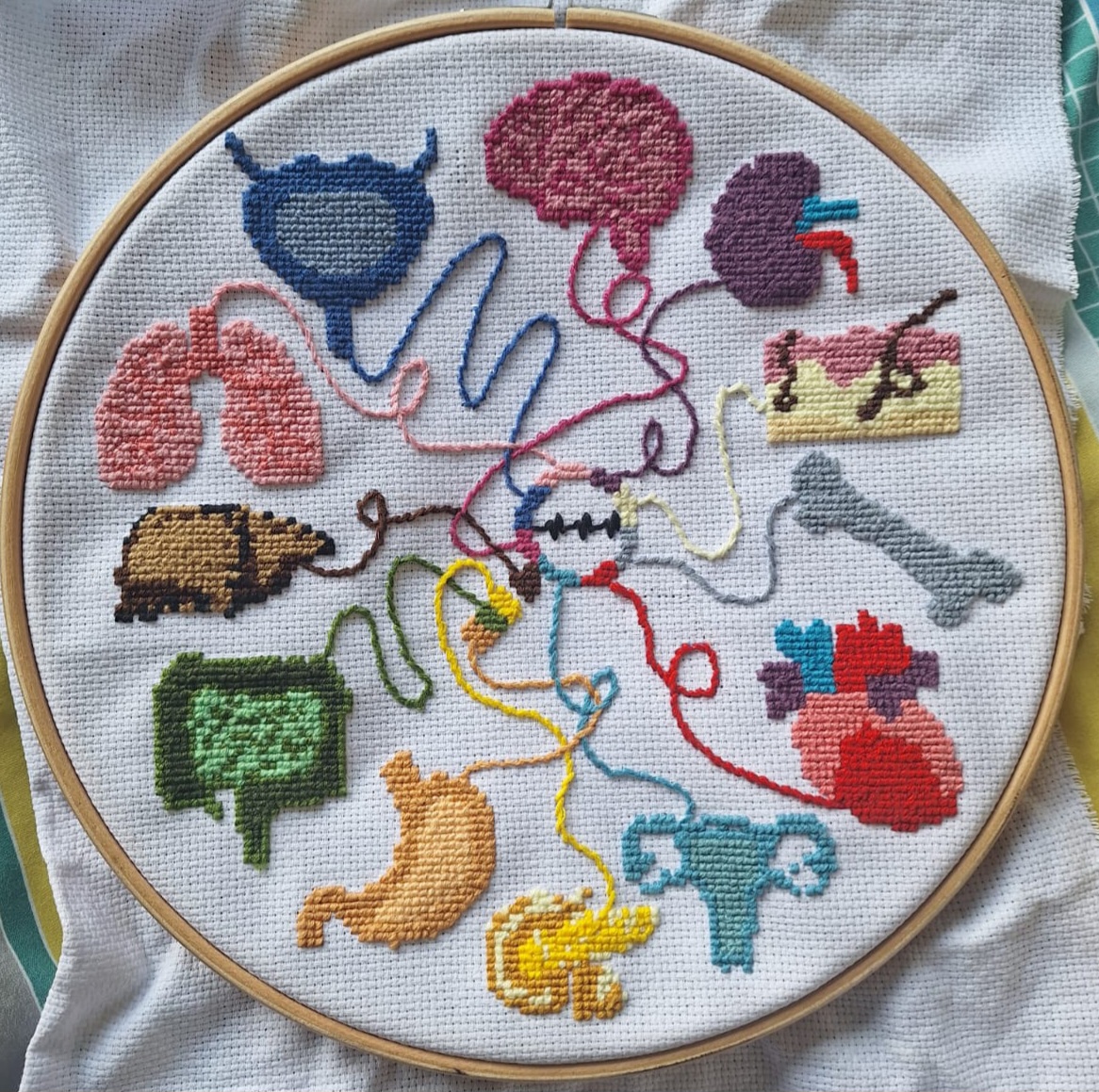Anatomical Connections
In creating this piece, I was interested in exploring the connections between the different organ systems and I knew I wanted to work with textiles as a medium. I think that the three- dimensional nature of this media provides a unique impact which I wanted to harness as part of my project. After considering other forms of textiles, I decided to focus on embroidery because I wanted to use the threads which created the organs to connect everything together. This provided a physical representation of the idea behind my art piece.
To create the artwork I first used squared paper to design the piece and create a plan, and afterwards used this plan to guide me as I embroidered my fabric and created the final piece.
Throughout the process of developing this creative piece, I have considered the complex interrelations of the systems and organs within the body. Sometimes symptoms which can seem random and unrelated will add up to show a clearer picture of the underlying medical condition. This is an extremely important lesson to learn as a medical student, it encourages you not to overlook symptoms or to pass them off as unrelated, as they may be the clue you need to reach a diagnosis and improve the life of the patient. In practice, it is very important to ask the patient about any other symptoms they have been experiencing, even if they don’t think they are related to the presenting complaint. This is an effective method of unearthing symptoms in other systems when there may not be time to perform a full review of systems.
Due to the intricate nature of embroidery, it was a lengthy process creating this work and therefore I had a large amount of time to reflect on the meaning of this piece and to consider the different ways in which the organs I have chosen to depict may be related to one another.
Annual Creative Prizewinner
Comments
Add legacy comments here
2 Comments
Submit a Comment


I particularly enjoyed this piece as it shows how intricately the human body works together. This shows the importance of holistic care.
This piece highlights the body from a holistic view point. Each embroidery shows a system and how they come together cohesively to form a complete human body. This piece interests me because of the textile nature behind it; coming from a creative degree previously, I can appreciate the time and effort that has gone into each small detail. Often we spend a lot of time looking at each of the specific system but don’t step back to look at the picture as a whole. This piece shows the importance of why as doctors we need to look at patients holistically because everything is connected.